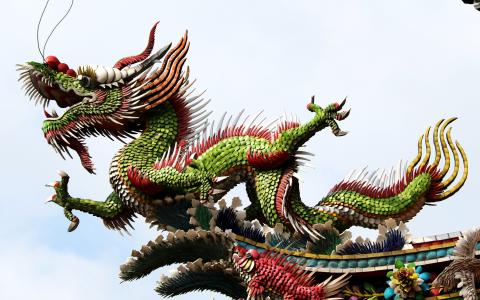
As the Year of the Dragon unfolds, China confronts a new economic landscape, far removed from its one time narrative of unparalleled growth, transitioning towards a paradigm where value investment prevails.
The nation grapples with its most severe economic downturn in four decades, marked by dwindling consumer confidence, a strategic pivot from Beijing prioritizing stability and security over sheer growth, and a tempered outlook from global firms and investors anticipating moderated returns.
Following a year marred by economic stagnation, the anticipated post-pandemic revival, spurred by the easing of restrictions in late 2022, fell short of expectations. The government's sustained crackdown on the private sector, affecting giants like Alibaba and Tencent, has instilled a sense of caution among entrepreneurs, deterring investment and hiring.
The real estate sector, a cornerstone of the economy and household wealth, faces its fourth consecutive year of contraction, significantly eroding property values and leaving numerous consumers with unfinished homes despite ongoing mortgage payments.
Rick Waters, an expert at the Eurasia Group, captures the prevailing sentiment, noting a profound recalibration of future expectations and concerns over the prospects for the next generation.
Beijing's cautious approach to fiscal stimulus, constrained by escalating debt and demographic challenges, has left investors wanting. The shift towards moderate growth, emphasizing security and addressing disparities under the "common prosperity" initiative, marks a significant transition in policy focus.
This recalibration is slowly being acknowledged by multinational corporations, recognizing that China's role as a voracious consumer of diverse goods is changing. Consumer confidence is at an all-time low, foreign direct investment has turned negative, and the stock market has seen significant value erosion amidst growing apprehensions regarding President Xi Jinping's economic stewardship.
Despite these challenges, China's position as a global manufacturing powerhouse and trading partner remains undisputed. Its economy grew by 5.2% last year, although structural issues suggest this momentum may not sustain. The economy's past drivers, such as the post-2008 infrastructure and real estate boom, have reversed, leading to significant financial distress in the property sector and broader economic implications.
Beijing's response, including targeted measures to support home buyers and stimulate construction, has yet to broadly revitalize demand. The impact of these efforts, coupled with financial support to state-owned enterprises, underscores the balancing act of fostering growth while managing debt and ensuring financial stability.
The enduring property slump, tepid income growth, and high youth unemployment are dampening consumer sentiment and spending. Entrepreneurs and businesses, once buoyed by optimism, are now reevaluating their plans in the face of regulatory scrutiny and economic uncertainty. Calls for reassurance and support for the private sector, crucial for job creation and innovation, are growing louder.
While China's policy measures have focused on strategic sectors like renewables and semiconductors, the broader implications of these initiatives, including potential overcapacity and deflationary pressures, are becoming apparent. Additionally, international tensions and the pursuit of technological self-reliance present both challenges and opportunities for China's economic trajectory.
Investor sentiment towards China has waned, with some considering it uninvestable amidst geopolitical tensions and domestic challenges. However, the market's valuation, trading at under nine times earnings, signals potential opportunities for value investors.
The shift towards companies that prioritize cost management, margin improvement, and shareholder returns is gaining traction, reflecting a more nuanced approach to investing in China's evolving economic landscape.
This transformation underscores the need for a dynamic investment strategy, recognizing the competitive pressures facing Chinese companies and the government's intent to diversify industry leadership. The narrative of China as a growth juggernaut has given way to a more complex reality, where value investment and strategic agility are paramount.



